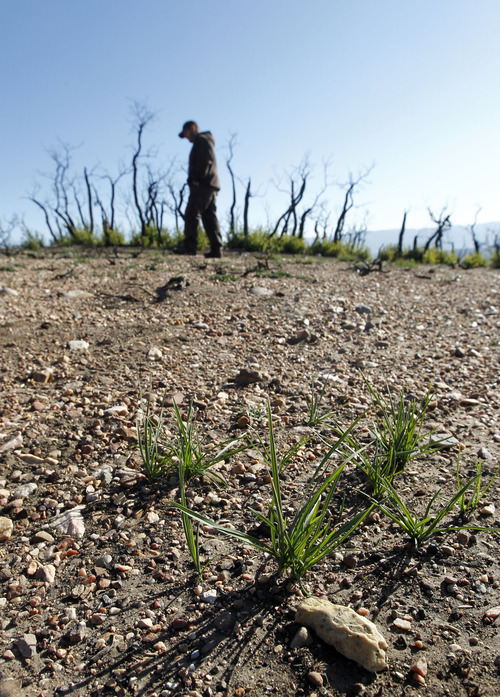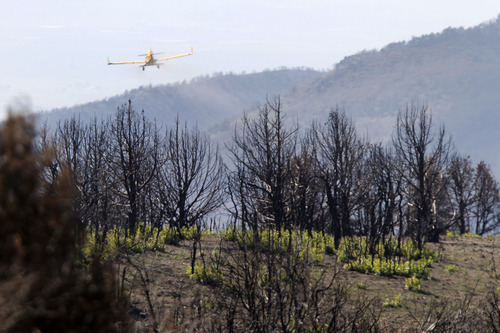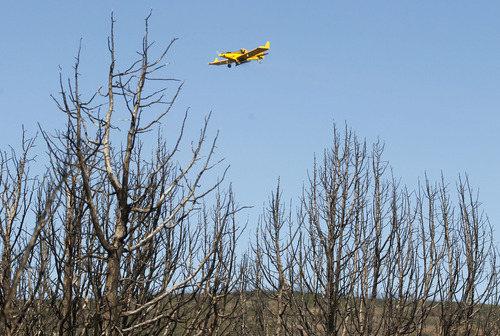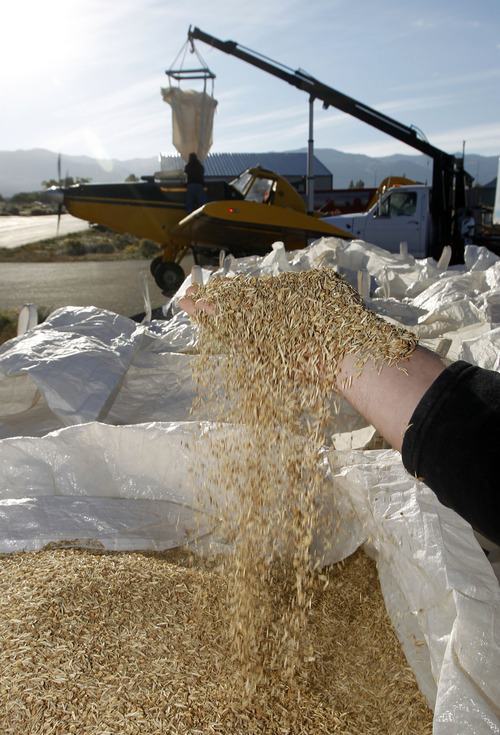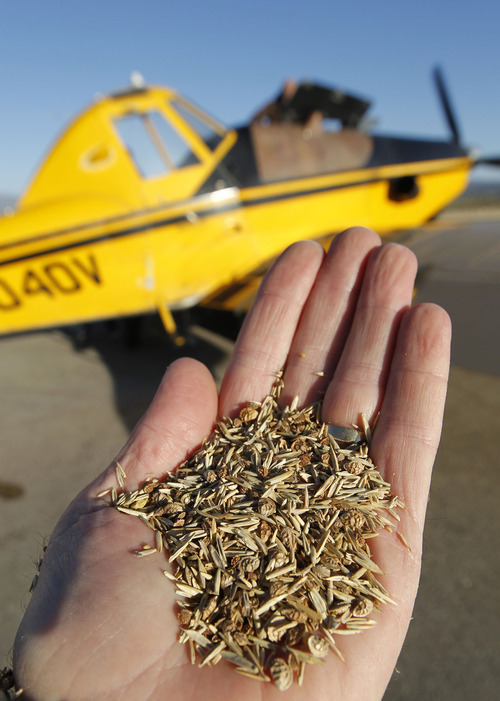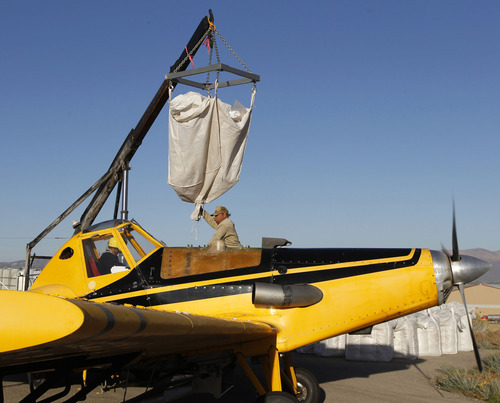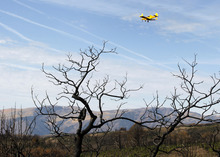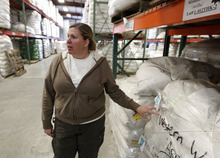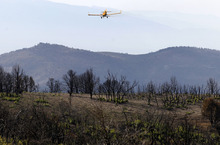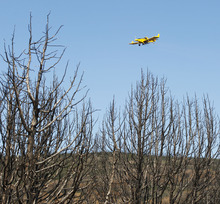This is an archived article that was published on sltrib.com in 2012, and information in the article may be outdated. It is provided only for personal research purposes and may not be reprinted.
Mount Pleasant • Given the number and size of burn scars left by this summer's wildfires, Utah officials are starting reseeding earlier than usual and using four times the half-million pounds of seed they normally store for a fire season.
Reseeding is typically done a little later in October or even early November, but the size of the 47,000-acre Wood Hollow Fire restoration area required that the process get started now.
"We would have liked to have held off for a while, but there is a lot to do," said Mark Farmer, regional habitat manager for the Utah Division of Wildlife Resources (DWR).
Alison Whittaker was returning to her Ephraim home after visiting family in Orem the first time she saw the massive Wood Hollow Fire in Sanpete County.
Whittaker, project leader at the DWR's Great Basin Research Center and seed warehouse in Ephraim, started crunching numbers.
"I was watching it grow and calculating in my head how many more seeds we were going to need to order," said Whittaker, a 12-year veteran of the center.
As the Wood Hollow Fire grew along with other big burns around the state, so did the number in Whittaker's head.
By the end of 2012 more than 2.1 million pounds of seed will have moved through the Great Basin Research Center and seed warehouse.
Whittaker said the warehouse typically stores between 400,000 and 500,000 pounds of seeds, but it always grows on big fire years. The early fire season this year gave state habitat restoration officials time to plan ahead and order enough to deal with the habitat lost.
The 2012 total is close to 2007, the year of the 363,000-acre Milford Flat Fire.
Planning and base funding for wildfire reseeding projects in Utah comes from the Utah Division of Wildlife Resources' Watershed Restoration Initiative. Other state and federal agencies are partners in the restoration efforts, which in the case of the Wood Hollow Fire will total about $3.2 million.
A significant chunk is being used this year to reseed the 47,000 acres of public and private land burned in the Wood Hollow Fire.
Aerial seeding began this week on the Wood Hollow burn area and elsewhere in Utah.
On Thursday, three planes designed to disperse 1,200 to 1,400 pounds of seeds per trip darted in and out of the Mount Pleasant Airport reloading and refueling to get the seed targeted for the Wood Hollow burn scar — 352,000 pounds — spread across 25,000 acres of selected terrain.
The initial seed batch — 17 species and 27 varieties — was specifically mixed by state wildlife biologists to not only provide wildlife habitat through restoration in the burned areas, but also to provide erosion control and possibly prevent future wildfires.
Cheatgrass, a nasty nonnative plant that overtakes native species, encourages wildfire, which in turn helps grow its footprint on the landscape.
"Once cheatgrass is established it perpetuates a cycle of wildfire," said Covy Jones, a DWR habitat restoration biologist. "By getting these seeds in the ground we have a chance to get ahead of cheatgrass and encourage plants that benefit wildlife and livestock and provide erosion control."
Once the planes have dispersed the initial seed, bulldozers will drag huge chains across the area to help bury seed by breaking up a unique crust on the soil surface that inhibits water penetration after wildfires, and make a fertile bed for sagebrush seeds that will be scattered from the air later this year.
"We plant sagebrush in critical mule deer habitat to get it re-established. If we allowed it to move back into the fire area alone it would take years and years and years," Jones said. "We help it along. It is a crucially important plant for deer and other sage-steppe species."




